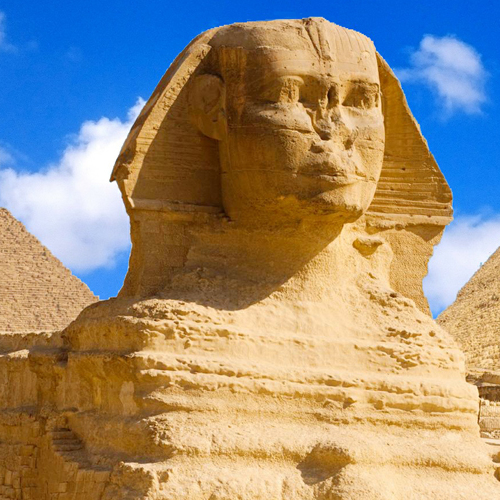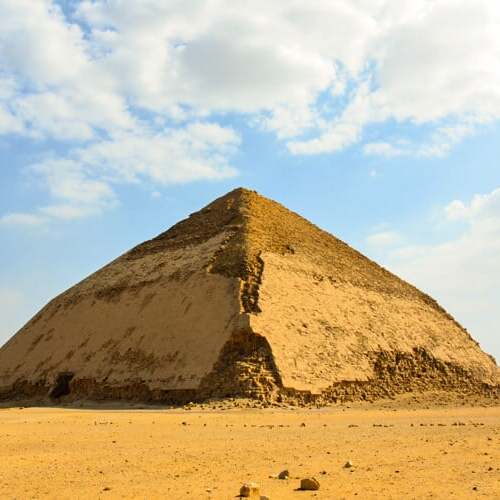No other nation in the world says ‘Welcome’ as often as the Egyptians, and every time, they mean it. While the ancient civilization of Egypt continues to amaze, contemporary Egyptians are equally remarkable.
The Pyramid of Khaba
Exploring the Enigmatic Pyramid of Khaba: A Window into Egypt's Ancient Past
The Pyramid of Khaba, often referred to as the Layer Pyramid, stands as an enduring testament to the reign of King Khaba, a monarch of the illustrious Third Dynasty, believed to be the successor of the enigmatic Sekhemkhet. This enigmatic monument, which has long confounded historians and archaeologists, invites us to delve into its mysteries, unlocking the secrets of an age long past.
In the year 1900, the renowned Italian archaeologist Alessandro Barsanti embarked on a journey of discovery, investigating the Pyramid of Khaba. At that time, the structure’s true owner remained a mystery, hidden beneath the sands of time. However, it was an American Expedition, led by the intrepid Reisner, that ultimately unveiled its secrets. Their excavations, coupled with the discovery of a few mastaba tombs in close proximity, began to shed light on this enigmatic pyramid.
Fragments bearing the name “Khaba” were unearthed, offering a tantalizing glimpse into the identity of the pyramid’s owner. Additionally, pottery pieces inscribed with the name “Narmer” surfaced, a revelation that led historians to reconsider the pyramid’s origins, leaning toward the Second Dynasty.
Nestled within the vast expanse of Zawyet el-Aryan, we find another enigmatic structure, the “Haram el-Meduwara,” commonly known as the round pyramid due to its diminutive size and the ravages of time that have befallen it. This southern pyramid boasts a base measuring approximately 84 meters squared, standing as a stark contrast to the grandeur of Egypt’s more famous pyramids.
Originally envisioned as a step pyramid, the Pyramid of Khaba was constructed with sloping masonry layers, with only the remnants of its first step’s lower area surviving to this day. Experts speculate that it may have initially comprised five to seven steps, yet today, its height reaches a mere 16 meters. Strikingly absent are the original limestone casings that once adorned Khaba’s pyramid, suggesting that the grand construction project may have been abandoned, leaving behind an intriguing enigma.
Venturing to the northeast corner of the pyramid, one can descend into its subterranean chambers via a staircase that leads westward to a passage. This passage, in turn, extends southward to a vertical shaft. In the upper reaches of the shaft, a second, incomplete passageway echoes the direction of the first.
Choosing the lower passageway leads to a second staircase, ultimately unveiling a burial chamber that curiously remains empty, its intended occupant a mystery lost to the ages. If, on the other hand, you explore the northern side of the vertical shaft, you will encounter the location of 32 storage rooms, which currently stand barren and devoid of their ancient treasures. Regrettably, due to the pyramid’s location in a military-zoned area, few investigations have been conducted, and the pyramid’s secrets remain largely concealed.
On the northern side of the Layer Pyramid, the intrepid team from the American Expedition turned their attention to a colossal mastaba, intriguingly designated as “Mastaba Z-500.” Within its depths, alabaster vases were discovered, each bearing the Horus name of Khaba, the enigmatic owner of this pyramid. Yet, the true identity of the artefact’s possessor remains an unsolved riddle, adding yet another layer of intrigue to the enigmatic Pyramid of Khaba.
As we stand before this ancient monument, the Pyramid of Khaba, we are humbled by the mysteries it guards, waiting for those who dare to unravel its secrets, offering a glimpse into the captivating world of Egypt‘s ancient past.
Created On March 18, 2020
Updated On July 22 , 2025
Giza Travel Guide



